Bank of America 2011 Annual Report Download - page 4
Download and view the complete annual report
Please find page 4 of the 2011 Bank of America annual report below. You can navigate through the pages in the report by either clicking on the pages listed below, or by using the keyword search tool below to find specific information within the annual report.-
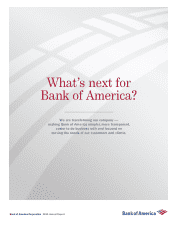 1
1 -
 2
2 -
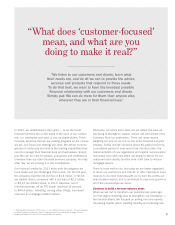 3
3 -
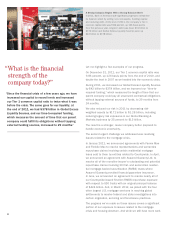 4
4 -
 5
5 -
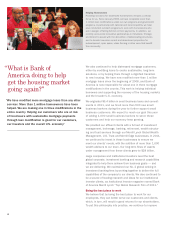 6
6 -
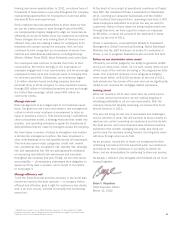 7
7 -
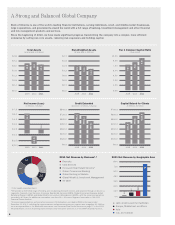 8
8 -
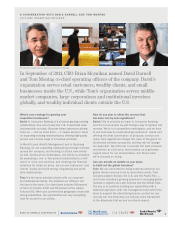 9
9 -
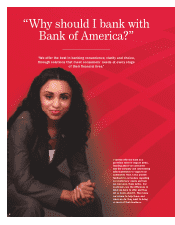 10
10 -
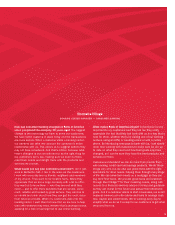 11
11 -
 12
12 -
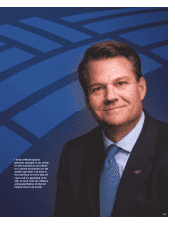 13
13 -
 14
14 -
 15
15 -
 16
16 -
 17
17 -
 18
18 -
 19
19 -
 20
20 -
 21
21 -
 22
22 -
 23
23 -
 24
24 -
 25
25 -
 26
26 -
 27
27 -
 28
28 -
 29
29 -
 30
30 -
 31
31 -
 32
32 -
 33
33 -
 34
34 -
 35
35 -
 36
36 -
 37
37 -
 38
38 -
 39
39 -
 40
40 -
 41
41 -
 42
42 -
 43
43 -
 44
44 -
 45
45 -
 46
46 -
 47
47 -
 48
48 -
 49
49 -
 50
50 -
 51
51 -
 52
52 -
 53
53 -
 54
54 -
 55
55 -
 56
56 -
 57
57 -
 58
58 -
 59
59 -
 60
60 -
 61
61 -
 62
62 -
 63
63 -
 64
64 -
 65
65 -
 66
66 -
 67
67 -
 68
68 -
 69
69 -
 70
70 -
 71
71 -
 72
72 -
 73
73 -
 74
74 -
 75
75 -
 76
76 -
 77
77 -
 78
78 -
 79
79 -
 80
80 -
 81
81 -
 82
82 -
 83
83 -
 84
84 -
 85
85 -
 86
86 -
 87
87 -
 88
88 -
 89
89 -
 90
90 -
 91
91 -
 92
92 -
 93
93 -
 94
94 -
 95
95 -
 96
96 -
 97
97 -
 98
98 -
 99
99 -
 100
100 -
 101
101 -
 102
102 -
 103
103 -
 104
104 -
 105
105 -
 106
106 -
 107
107 -
 108
108 -
 109
109 -
 110
110 -
 111
111 -
 112
112 -
 113
113 -
 114
114 -
 115
115 -
 116
116 -
 117
117 -
 118
118 -
 119
119 -
 120
120 -
 121
121 -
 122
122 -
 123
123 -
 124
124 -
 125
125 -
 126
126 -
 127
127 -
 128
128 -
 129
129 -
 130
130 -
 131
131 -
 132
132 -
 133
133 -
 134
134 -
 135
135 -
 136
136 -
 137
137 -
 138
138 -
 139
139 -
 140
140 -
 141
141 -
 142
142 -
 143
143 -
 144
144 -
 145
145 -
 146
146 -
 147
147 -
 148
148 -
 149
149 -
 150
150 -
 151
151 -
 152
152 -
 153
153 -
 154
154 -
 155
155 -
 156
156 -
 157
157 -
 158
158 -
 159
159 -
 160
160 -
 161
161 -
 162
162 -
 163
163 -
 164
164 -
 165
165 -
 166
166 -
 167
167 -
 168
168 -
 169
169 -
 170
170 -
 171
171 -
 172
172 -
 173
173 -
 174
174 -
 175
175 -
 176
176 -
 177
177 -
 178
178 -
 179
179 -
 180
180 -
 181
181 -
 182
182 -
 183
183 -
 184
184 -
 185
185 -
 186
186 -
 187
187 -
 188
188 -
 189
189 -
 190
190 -
 191
191 -
 192
192 -
 193
193 -
 194
194 -
 195
195 -
 196
196 -
 197
197 -
 198
198 -
 199
199 -
 200
200 -
 201
201 -
 202
202 -
 203
203 -
 204
204 -
 205
205 -
 206
206 -
 207
207 -
 208
208 -
 209
209 -
 210
210 -
 211
211 -
 212
212 -
 213
213 -
 214
214 -
 215
215 -
 216
216 -
 217
217 -
 218
218 -
 219
219 -
 220
220 -
 221
221 -
 222
222 -
 223
223 -
 224
224 -
 225
225 -
 226
226 -
 227
227 -
 228
228 -
 229
229 -
 230
230 -
 231
231 -
 232
232 -
 233
233 -
 234
234 -
 235
235 -
 236
236 -
 237
237 -
 238
238 -
 239
239 -
 240
240 -
 241
241 -
 242
242 -
 243
243 -
 244
244 -
 245
245 -
 246
246 -
 247
247 -
 248
248 -
 249
249 -
 250
250 -
 251
251 -
 252
252 -
 253
253 -
 254
254 -
 255
255 -
 256
256 -
 257
257 -
 258
258 -
 259
259 -
 260
260 -
 261
261 -
 262
262 -
 263
263 -
 264
264 -
 265
265 -
 266
266 -
 267
267 -
 268
268 -
 269
269 -
 270
270 -
 271
271 -
 272
272 -
 273
273 -
 274
274 -
 275
275 -
 276
276
 |
 |

2
“ What is the financial
strength of the
company today?”
Let me highlight a few examples of our progress.
On December 31, 2011, our Tier 1 common capital ratio was
9.86 percent, up 126 basis points from the end of 2010, and
double the level in 2007 as we headed into the economic crisis.
During 2011, we increased our Global Excess Liquidity Sources
by $42 billion to $378 billion, and we improved our “time-to-
required funding,” which measures the length of time that our
parent company could pay all unsecured contractual obligations
without tapping external sources of funds, to 29 months from
24 months.
We also reduced our risk in 2011 by decreasing risk-
weighted assets by $171 billion to $1.28 trillion, including
reducing legacy risk exposures in our Global Banking &
Markets business by 35 percent to $15 billion.
The result is a stronger, leaner company better prepared to
handle economic uncertainty.
The second urgent challenge we addressed was resolving
issues related to the mortgage crisis.
In January 2011, we announced agreements with Fannie Mae
and Freddie Mac to resolve representations and warranties
repurchase claims involving certain residential mortgage
loans sold to them by entities related to Countrywide. In April,
we announced an agreement with Assured Guaranty Ltd. to
resolve all of the monoline insurer’s outstanding and potential
repurchase claims involving 29 first- and second-lien residen-
tial mortgage-backed securitization (RMBS) trusts where
Assured Guaranty provided financial guarantee insurance.
In June, we announced an agreement to resolve nearly all of
our Countrywide-issued first-lien RMBS repurchase exposure
with respect to 530 trusts with an original principal balance
of $424 billion. And, in March 2012, we joined with the four
other largest U.S. mortgage servicers in reaching global
settlements to resolve federal and state investigations into
certain origination, servicing and foreclosure practices.
The progress we’ve made on these issues covers a significant
portion of our exposure to issues related to the mortgage
crisis and housing downturn. And while we still have more work
“ Since the financial crisis of a few years ago, we have
increased our capital to record levels and increased
our Tier 1 common capital ratio to twice what it was
before the crisis. The same goes for our liquidity; at
the end of 2011, we had $378 billion in Global Excess
Liquidity Sources, and our time-to-required funding,
which measures the amount of time that our parent
company could fulfill its obligations without tapping
external funding sources, increased to 29 months.”
A Strong Company Begins With a Strong Balance Sheet
In 2011, Bank of America made significant progress to streamline
its balance sheet by selling non-core assets, building capital
and reducing debt. At the end of 2011, the company’s Tier 1
common capital ratio was 9.86 percent, up 126 basis points
from the previous year, long-term debt was down $76 billion to
$372 billion and Global Excess Liquidity Sources were up
$42 billion to $378 billion.
